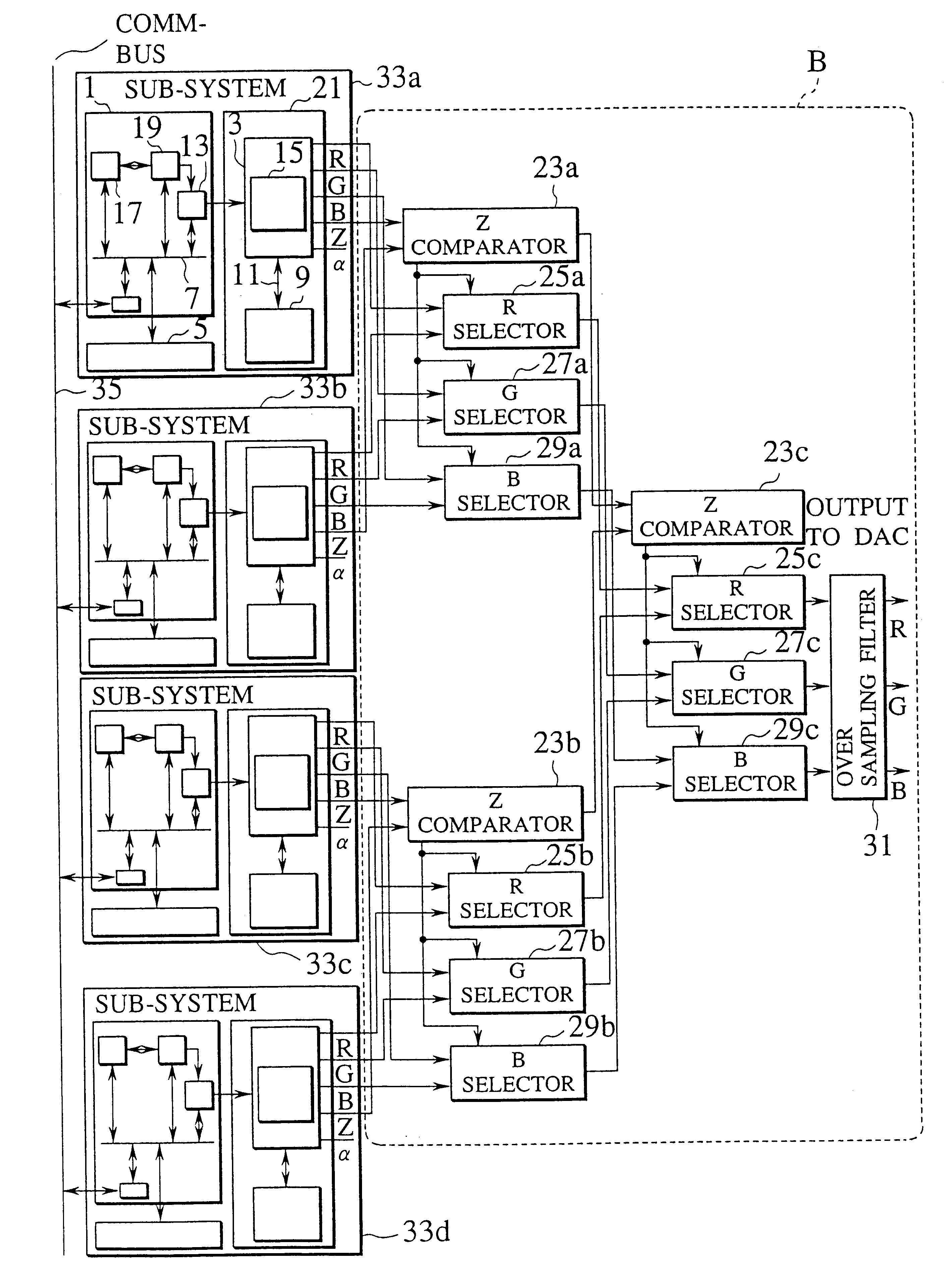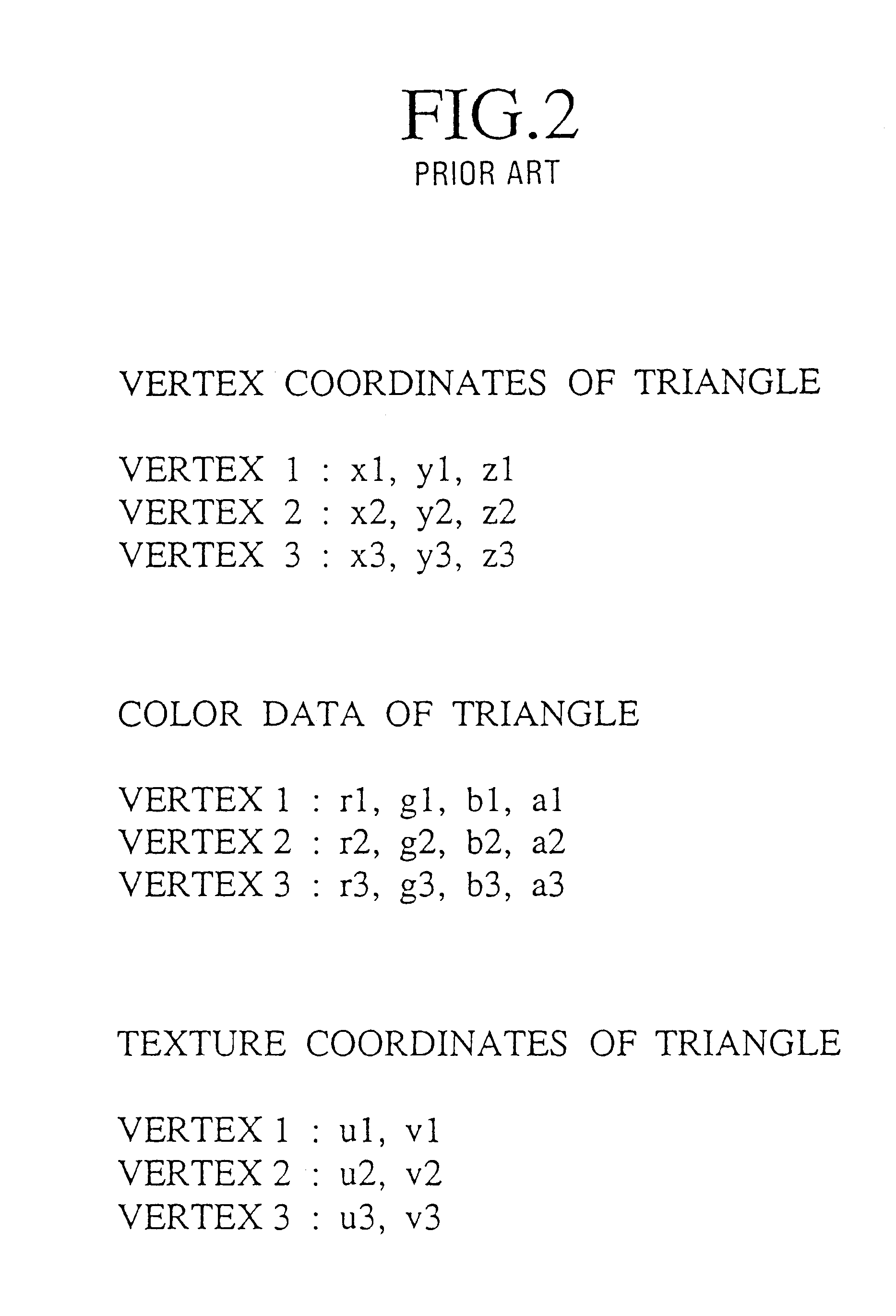Apparatus having graphic processor for high speed performance
a graphic processor and high-speed technology, applied in the field of information processing apparatuses, can solve the problems of increasing the quantity of wiring and graphics drams, the inability of the prior art to let the apparatus demonstrate high performance, and the inability to fully utilize the capacity of the gpus
- Summary
- Abstract
- Description
- Claims
- Application Information
AI Technical Summary
Problems solved by technology
Method used
Image
Examples
first embodiment
FIG. 8 shows an information processing apparatus employing a single graphic processor unit (GPU) according to the
The apparatus has a processor unit 1, a main memory 5, and a main bus 7 for connecting them to each other. The GPU 3 and a graphics memory 9 are connected to each other through a graphics bus 11 and form a semiconductor integrated circuit, i.e., a DRAM ASIC GPU 21 fabricated on a single chip.
The GPU 3 involves a pre-process part 13 and a main process part 15. The main process part 15 employs digital differential analyzers (DDAs), to read texture information from the graphics memory 9, carry out rendering on the pixels of an output image, and write a result in a frame buffer in the graphics memory 9. The pre-process part 13 calculates parameters such as initial and differential values for the main process part 15.
The processor unit 1 has a processor core 17, which reads a program from the main memory 5 and executes the same. According to the program, the processor core 17 ...
second embodiment
FIG. 9 shows a novel information processing apparatus having a plurality of DRAM ASIC GPUs 21 according to the This apparatus employs a tournament technique.
Each of the GPUs 21 is formed on a separate chip, and they are connected to a main bus 27. A CPU distributes graphics tasks to the GPUs 21. Although the output of each GPU 21 is indicated with a single line for the sake of simplicity, it has a width of several bytes as will be explained later.
The outputs of the GPUs 21 are multiplexed into a single image signal according to the tournament technique.
When .alpha.-values are not considered and when one of two outputs is selected, one having a smaller z-value indicating a shallower depth is selected. FIG. 10 shows a tournament selector 28 of FIG. 9.
The tournament selector 28 is arranged at each node of a tournament scheme of the GPUs 21. The tournament selector 28 consists of a comparator 31 and a selector 33. The comparator 31 compares two z-values z1 and z2 with each other and pr...
third embodiment
FIG. 13 shows an information processing apparatus employing multiple GPUs according to the present invention. This embodiment employs a plurality of not only DRAM ASIC GPUs 21 but also processor units 1 and main memories 5. Namely, this embodiment is a multi-processor system. The processor unit 1, main memory 5, and DRAM ASIC GPU 21 form a sub-system. The system of FIG. 13 has four sub-systems 33a to 33d.
The multi-processor system is capable of dealing with heavy graphics tasks at high speed dependent on the number of the sub-systems.
The operation of the embodiment of FIG. 13 will be explained.
A tournament selector circuit B selects the outputs of the sub-systems 33a to 33d through a tournament similar to the tournament selector circuit A of FIG. 12 selecting the outputs of the GPUs 21a to 21d. The arrangement and topology of the circuit B are the same as those of the circuit A of FIG. 12.
The sub-systems 33a to 33d have a communication means 35 for synchronization. The means 35 may ...
PUM
 Login to View More
Login to View More Abstract
Description
Claims
Application Information
 Login to View More
Login to View More - Generate Ideas
- Intellectual Property
- Life Sciences
- Materials
- Tech Scout
- Unparalleled Data Quality
- Higher Quality Content
- 60% Fewer Hallucinations
Browse by: Latest US Patents, China's latest patents, Technical Efficacy Thesaurus, Application Domain, Technology Topic, Popular Technical Reports.
© 2025 PatSnap. All rights reserved.Legal|Privacy policy|Modern Slavery Act Transparency Statement|Sitemap|About US| Contact US: help@patsnap.com



